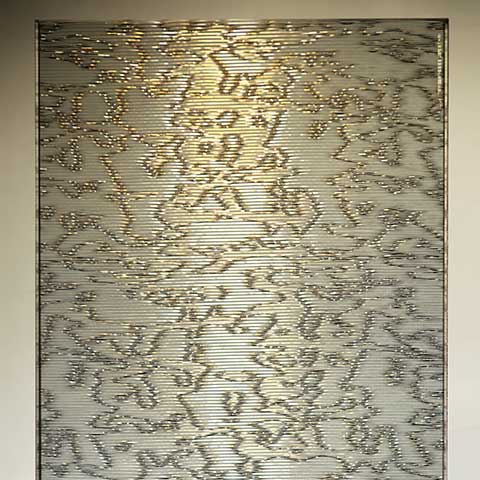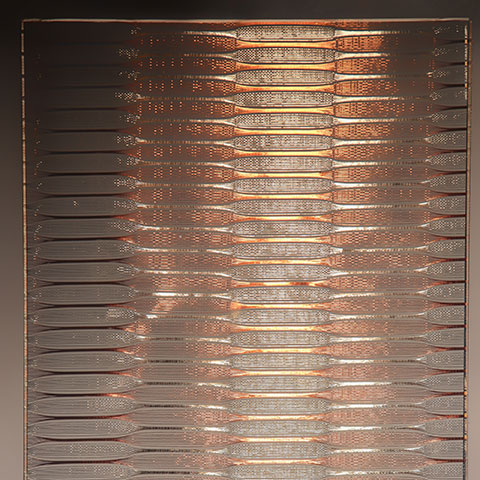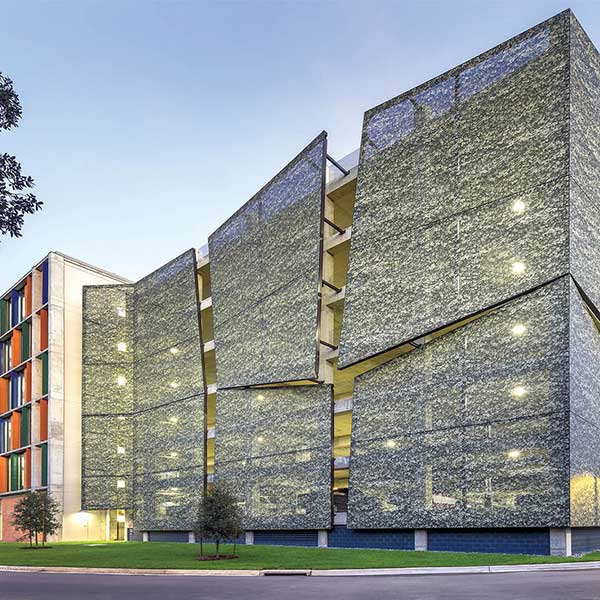Wired glass is also called shatterproof glass and steel wire glass. In the rolling production process, it is a special glass formed by silk printing and pressing into a semi-liquid glass ribbon. It has the advantage of being stronger than ordinary glass. When the glass is impacted or the temperature changes sharply, it can be broken and cracked without flying, preventing small angular fragments from flying out and hurting people. For example, when the fire spreads and the steel wire glass is heated and broken, it can still maintain a fixed state and play the role of isolating the fire, so it is also called fireproof glass. The disadvantage is that during the production process, the screen is easily oxidized by high-temperature radiation, and yellow and "rust spot"-like bubbles may appear on the glass surface. Wired glass is often used in skylights, ceilings, doors and windows, etc., which are easily affected by vibration.

Features of wired glass:
1. Fire resistance. Even if the wired glass shatters, the wire or mesh will hold the shards in place, making it less likely to shatter. Even when the flame is extinguished, it can block the intrusion of flame and fire powder, and prevent the flame from spreading and burning from the opening. Article 64 of the Japanese Building Standards Law regulates fire doors. Openings in the outer wall must prevent the spread of flame. The combination of wired glass and Class B fire door frame can be used as Class B fireproof material.

2. Safety. Wired glass prevents flying debris. Even if the glass is shattered by external forces such as earthquakes, storms, and shocks, the fragments are difficult to disperse. Therefore, compared with ordinary glass, the fragments are not easy to fly and hurt people.
3. Anti-theft. Ordinary glass is easily broken, allowing thieves to sneak in and carry out illegal activities, but wired glass is not. Even if the glass is broken, the barbed wire is still working, and it is not easy for thieves to steal. The anti-theft performance of wired glass brings people a sense of psychological security.

Due to the presence of wires or meshes in the wired glass, the integrity of the wired glass is greatly enhanced. When it is destroyed, it can avoid the overall collapse, so it has certain fire protection and safety effects. The disadvantage of laminated glass is poor perspective, because there is a wire mesh inside, which interferes with the visual effect to a certain extent. Second, the metal at the edge of the glass filament is easily corroded.

The safety of wire mesh glass is reflected in its integrity when damaged. The glass fragments will not scatter under the pulling of the steel wire, which reduces the harm to the human body. It can be used on skylights, roofs, indoor partitions and other sundries that are vulnerable to damage. In addition, because the screen glass is not easy to penetrate, it also has a certain anti-theft effect when used in door and window glass. Grid glass can also be used as a secondary fire protection material for doors and windows. Ordinary glass is easily broken by heat in case of fire, causing air flow and spreading the fire. Although the glass equipped with wire mesh will crack in a fire, it will not break and penetrate due to the support of wire or wire mesh, and can maintain its integrity to a considerable extent, prevent air flow, and prevent Viral contagion has a good effect. fire. Wired laminated glass is also suitable for anti-seismic occasions, such as buildings with high anti-seismic requirements, factory buildings with high industrial vibration, etc. Wired laminated glass improves the brittleness of flat glass and is a low-cost and widely used architectural glass.
pre:Wired glass is also called fireproof glass
next:How is Laminated Glass Metal Mesh used in architectural applications
© 2025 Joinwin Architectural Wire. All Rights Reserved. | Sitemap
Recommended Read
What are the design possibilities with different patterns and weaves of metal mesh
What are the maintenance requirements for Laminated Glass Metal Mesh